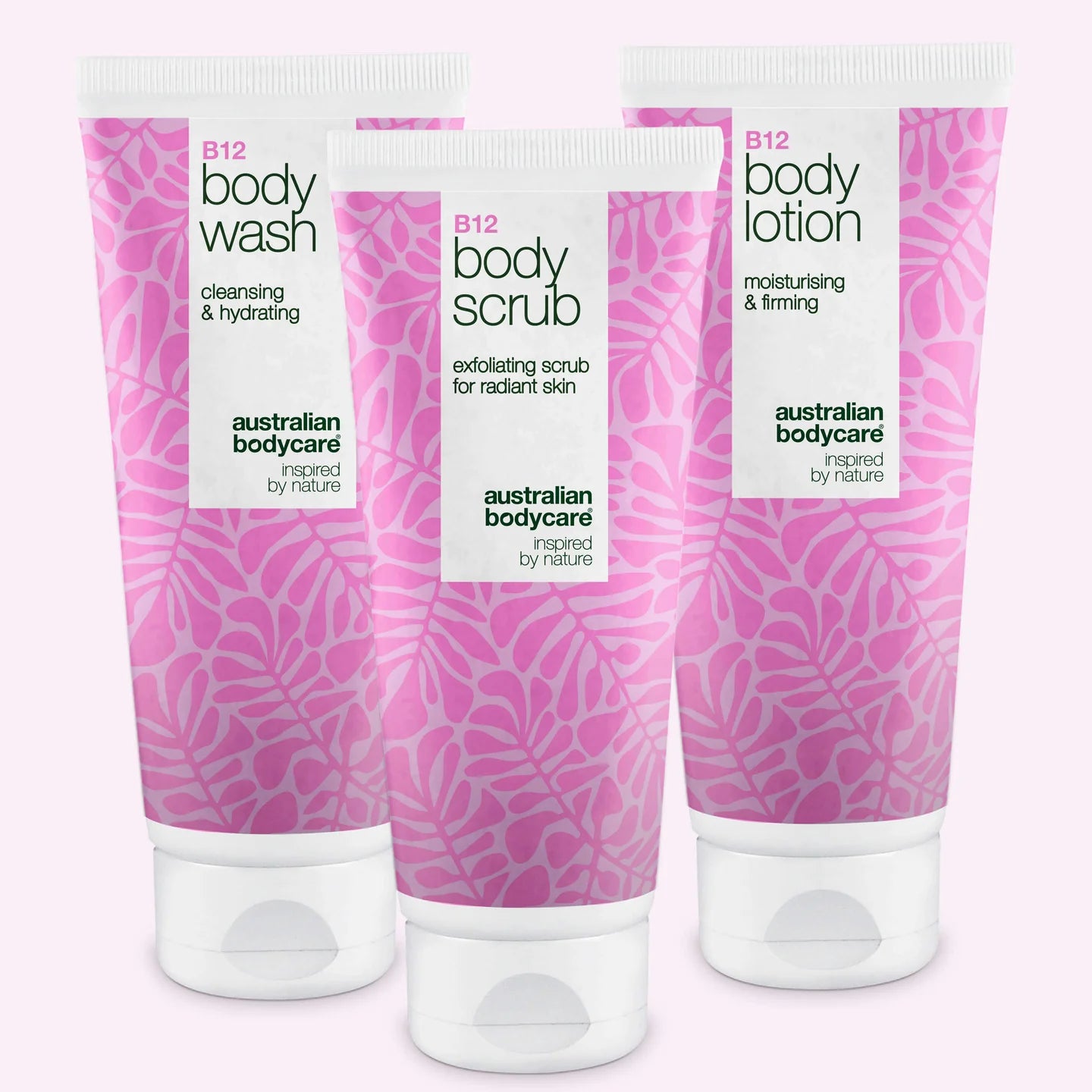Lichen Sclerosus in Men: All About Symptoms, Diagnosis, and Treatment
Lichen sclerosus is a rare, chronic skin condition that primarily affects the genital area of men. It can cause itching, pain, scarring, bluish spots, and narrowing of the urethra.
To make a correct diagnosis, a physical examination, biopsies, and other tests are required since the symptoms can mimic other conditions. Treatment options include corticosteroid creams and medications, while various ointments, gels, and creams can help manage typical symptoms like itching and redness.
Keep reading to learn more.
Table of contents
What is Lichen Sclerosus?
Lichen sclerosus affects the skin, resulting in white spots and thin skin that can easily crack. The condition causes itching and painful sores and often affects the genitals in both men and women.
Causes and Symptoms
Causes of lichen sclerosus in men often involve issues with the immune system and hormones. Researchers believe the body’s defense might mistakenly attack the skin on the penis. Hormonal factors also play a role, but the exact mechanisms are still not fully understood.
The development of this condition may also be linked to heredity, meaning men with a family history of lichen sclerosus should be extra vigilant.
The symptoms of lichen sclerosus are clear and can cause discomfort. Men may experience itching, pain, and redness around the penis. Over time, scarring, foreskin constriction, and sores may develop, which can make sex or urination painful or difficult.
Some men notice white spots on the skin, an early sign of lichen sclerosus. This requires attention from a medical specialist for proper diagnosis and treatment.
Prevalence in Men and Women
Lichen sclerosus is a skin disorder that affects both men and women, but in different ways. To understand how, see the table below:
| Gender | Prevalence | Symptoms |
|---|---|---|
| Men |
Less common |
Rash on genitals, itching, pain |
| Women | More common |
Rash on genitals, itching, pain, adhesions |
Both men and women can get lichen sclerosus, but the condition is more common in women. Both genders experience symptoms such as rash, itching, and pain. However, women may also experience adhesions. Men should be aware of changes and seek medical help, as the diagnosis can be challenging.
You can read more about the treatment of lichen sclerosus in women right here.
Risk Factors for Men with Lichen Sclerosus
Risk factors for men with lichen sclerosus may include age and hormonal factors as well as genetic factors. Age can affect the incidence of the condition, and hormonal imbalances may play a role in its development.
Genetic factors can also increase the risk of developing lichen sclerosus in men.
Age and Hormonal Factors
Age plays a significant role in the development of lichen sclerosus in men. As men get older, their hormone balance changes, which can increase the risk of developing the condition.
Hormones like testosterone have a significant influence on men’s skin and its elasticity. As the levels of these hormones decrease with age, men’s skin may become more vulnerable to conditions like lichen sclerosus.
These changes create an environment where the skin is more likely to become inflamed or damaged, contributing to the symptoms associated with lichen sclerosus. Researchers are still investigating exactly how age and hormones interact with other factors like genetics and the health of the immune system to affect the risk of lichen sclerosus.
It’s important for men to be aware of changes in their bodies and seek medical help if they notice unusual symptoms on their skin.
Genetic Factors
Heredity plays a role in the development of lichen sclerosus, but specific genes have not yet been identified. Research indicates that the presence of lichen sclerosus in family members can increase the likelihood that others in the family might also develop the condition.
Studies suggest that there may be a genetic predisposition to lichen sclerosus, and that genetic factors may play a role in its development.
Treatment of Lichen Sclerosus in Men
The treatment of lichen sclerosus in men involves creams and medications that can relieve symptoms and prevent further tissue damage. Surgical options such as circumcision may also be considered in more severe cases, where removing scar tissue can improve comfort.
Lifestyle changes, including good hygiene and infection prevention, can help reduce discomfort and lower the risk of complications.
Creams and Medications
The cream used to treat lichen sclerosus helps reduce itching and irritation and restore the skin's elasticity. Additionally, medications such as corticosteroids can help decrease inflammation and prevent scar tissue formation.
Using cream and medication as part of the treatment can alleviate symptoms and more effectively control the condition. These approaches can be crucial in improving the quality of life for men living with lichen sclerosus.
It's important to follow the doctor’s instructions on the correct application and dosage of cream or medication prescribed to achieve optimal results.
Surgical Options
Lichen sclerosus in men may require surgical treatment to prevent serious complications such as urinary obstruction or infections. Surgery can also relieve pain, improve urinary function, and prevent further damage to the skin and tissue.
1. Urethrostomy: A procedure used to widen a narrowed urethra and restore normal urine flow.
2. Circumcision: An operation involving the removal of the foreskin and sometimes used to treat balanitis xerotica obliterans.
3. Scar tissue removal: A surgical option involving the removal of scar tissue, which can help alleviate symptoms and prevent recurrent skin changes.
Remember regular follow-up and care after surgical treatment to prevent recurring symptoms and ensure optimal healing.
Lifestyle Changes
Lifestyle changes play a crucial role in the treatment of lichen sclerosus in men. Avoiding skin irritation by choosing loose-fitting clothes and using mild soaps can help relieve symptoms. Regular exercise can improve blood circulation and lessen discomfort. A healthy diet focused on anti-inflammatory foods like fruits, vegetables, and whole grains can contribute to overall improvement. Stress management through meditation or mindfulness can also be beneficial. Maintaining a healthy weight through diet and exercise is important, as being overweight can exacerbate the condition.
It's important to avoid tobacco and alcohol, as they can worsen symptoms. Regular check-ups with the doctor are necessary to monitor the condition and adjust the treatment plan as needed.
Remember to stay hydrated by drinking plenty of water daily, as it helps maintain the body's natural balance and health.
This also ensures that you manage diabetes if it is relevant to your situation.
Prevention and Management of Lichen Sclerosus in Men
Preventing and managing lichen sclerosus in men requires regular hygiene to avoid infections. Counseling and support from healthcare and alternative practitioners can help manage symptoms and concerns about the disease.
Lifestyle changes can also have a positive impact on reducing relapses of the condition.
Good Hygiene and Infection Prevention
Lichen sclerosus in men can be managed by maintaining good hygiene to avoid infections. This can be achieved by:
1. Frequently washing the affected area with mild soap and clean water.
2. Wearing loose, cotton clothing to reduce friction and irritation.
3. Avoiding harsh cleaners, fabric softeners, or scented products that can irritate the skin.
4. Regularly checking and treating any genital infections to prevent the spread or worsening of the condition.
5. Seeking timely medical help in case of signs of infection or other complications.
These measures can help ensure optimal hygiene and reduce the risk of infections associated with lichen sclerosus in men.
Counseling and Support
Facing lichen sclerosus can be beneficial to seek advice from a qualified healthcare professional. This can help you better understand your condition and get guidance on the best treatment options.
Support groups and online communities can also allow you to share experiences and receive support from others who have faced similar challenges.
Getting counseling and support can be crucial for effectively managing lichen sclerosus. Support from specialized healthcare professionals and communities can provide the necessary mental and emotional boost to cope with the disease.
Alternative Treatments
Herbal medicine and dietary supplements are two popular forms of alternative treatment for lichen sclerosus in men. Many men find relief through considering these methods as a supplement to conventional medical treatment. There are also reports that acupuncture and meditation can help reduce the symptoms of the condition. It's important to note that it's always recommended to consult a qualified healthcare professional before starting any alternative treatment for lichen sclerosus.
A healthy lifestyle focused on a balanced diet and regular exercise can also help alleviate the symptoms of lichen sclerosus. Improving overall health can have positive effects on managing the condition.
Conclusion
Lichen sclerosus in men is a rare skin disorder that requires early detection and proper treatment. Symptoms such as itching, pain, and scarring should not be ignored. Men should seek medical help as early diagnosis and treatment are key to managing the condition.
FAQ
What is lichen sclerosus in men?
Lichen sclerosus is a skin condition that can affect men’s genital areas and cause discomfort. It appears as white patches on the skin that can become thick and cause itching or pain.
How is lichen sclerosus detected in men?
To diagnose lichen sclerosus in men, a doctor will examine the affected areas and may recommend a skin biopsy. This helps confirm the diagnosis by examining a small piece of skin under a microscope.
Is lichen sclerosus common in men?
Lichen sclerosus is less common in men than in women, but it still occurs within the male population. Men of any age can develop the condition, but it is more frequently seen in men over 50 years old.
How is lichen sclerosus treated in men?
The treatment of lichen sclerosus focuses on relieving symptoms and preventing further damage to the skin. Typically, this includes the use of steroid creams or ointments. In some cases, more advanced treatments like laser therapy may be necessary. It's important to follow a doctor’s advice and have regular follow-ups to monitor the condition.





